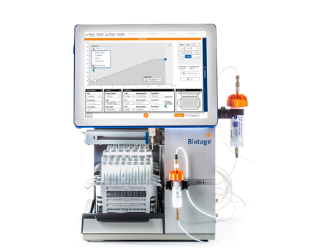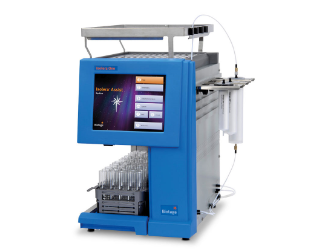Purification of Peptides
When a peptide is synthesized and cleaved from a resin, the next step is usually a quick preparation and multiple injections onto a preparative HPLC column for isolation from deletion sequences and other contaminants. A great step to take before preparative HPLC is a single injection onto a flash purification system. This quick clean-up is often sufficient to move to the next step in the synthesis. Flash purification prior to preparative HPLC also creates the opportunity to further purify the peptide of interest with fewer injections and a less challenging mixture, and extends the life of expensive preparative HPLC columns.


 Organic Workflow
Organic Workflow Peptide Workflow
Peptide Workflow Scale-Up Flash Purification
Scale-Up Flash Purification  Sample Preparation
Sample Preparation Biomolecule Purification
Biomolecule Purification Oligo synthesis
Oligo synthesis Scavengers and Reagents
Scavengers and Reagents Service & Support
Service & Support Accessories & Spare parts
Accessories & Spare parts Investors
Investors Reports & News
Reports & News The Share
The Share Corporate Governance
Corporate Governance Calendar
Calendar Sustainability
Sustainability Our Offering
Our Offering Our History
Our History Our Locations
Our Locations Leadership
Leadership






/ORGANIC%20IMAGES/biomark002.346%20-%20Peptide%20Synthesis.jpg?width=740&height=448&name=biomark002.346%20-%20Peptide%20Synthesis.jpg)
